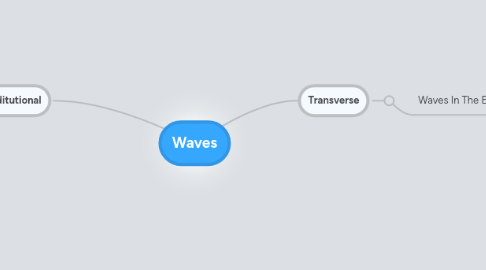
1. Longditutional
1.1. Sound
1.1.1. Aspects Of It
1.1.1.1. Propogation Of Sounds
1.1.1.1.1. What it is
1.1.1.1.2. How to observe it
1.1.1.2. Mediums
1.1.1.2.1. What It Is
1.1.1.3. Frequencies
1.1.1.3.1. Humans - 20Hz <-> 20kHz - Range of audiable frequencies - Ears lose sensitivity with time > Human Range - Ultrasound < Human Range - Infrasound Ultra/Infrasound - Used by animals / technology
1.1.1.4. Speed
1.1.1.4.1. Factors Affecting - Density or molecules in a medium - more molecues - less thermal energy gets conducted to the molecule before being conducted away = more energy = lower speed for given energy amount Speed = Distance Travelled / Time taken
1.1.1.5. Echo
1.1.1.5.1. Reflected sound waves - heard after intervals of silence = Echo Reverberation - Echos too cloes to each other to hear distince intervals = Reflecting surface too near Speed of sound [Derived from echo] - Distance to wall and back / Time Taken
1.1.1.6. Pitch / Loudness of Sound Pitch - Frequency > , Pitch > - Crests / Throughs closer together Loudness / A,,plitue - Aplitude > , Volume >
1.1.1.7. Ultrasound
1.1.1.7.1. - Frequency = >20 kHz - Humans can't hear - Used by aniamals / technology
1.1.2. What It Is
1.1.2.1. A form of energy - Propogated from 1 point to another - Longditutional Wave - Produced by vibration of some objects
2. Transverse
2.1. Waves In The Electromagnetic Spectrum
2.1.1. What it is
2.1.1.1. A classificatiom of waves of differing wave lengths
2.1.1.1.1. The relationship
2.1.2. What waves are in it
2.1.2.1. gamma rays -> X - rays [0.1 nm] -> ultra - violet waves [0.1 picometre] -> light [0.5 picometre] -> Infra -red radiation [0.001 mm] -> microwaves [1cm] -> radio waves [1km]
2.1.2.1.1. Specific Wave Properties
2.1.3. How they are related
2.1.3.1. - All transverse waves - Travel at speed of light [ 3x 10^8m s^-1] - Produced by simultaneous vibration of electric and magnetic fieldds - Transfer energy from one place to another - Can travel through a vaccum - Travel through vacuum at speed of light - All show wave properties like refraction and reflection - Obey wave equation of V = f x wavelength
2.1.4. What effects they cause
2.1.4.1. - primarily cause heating effects - over exposure harmful efects - sunburn, skin cancer [eg] - electromagnetic wave have small packets energy, photons - frequency > , amount energy photon > - according frequency and energy, electromagnetic waves classify - ionising radiations / non-ionising radiations - ionising radiations - extreme high frequency [eg gamma rays, x rays] - enough energy for ionisation - process, 1 or more electron removed from neutral atom by radiation - harm living cells [change equation] - destroy / modify living tissues - non-ionising radiations - photon energy too weak produce ionisation [eg ultra-violet radiation, visible light, infra-red radiation, microwave, radio wave
